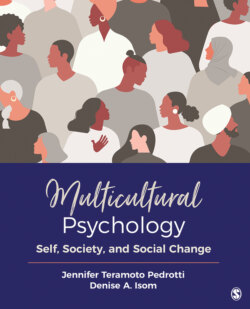Читать книгу Multicultural Psychology - Jennifer T. Pedrotti - Страница 66
На сайте Литреса книга снята с продажи.
Conclusion
ОглавлениеIn this chapter we have explained a number of different factors that may impact the development of worldview in groups and in individuals. We have used more vignettes than we used in any of our other chapters to help provide you with a variety of voices from all different groups. Some of you have heard many of these worldviews before, or have more intimate knowledge of people that may hold similar beliefs, while others of you may be hearing about some of them for the first time. One of the most effective ways to learn about those who are different from you in some way is to develop a level of multicultural competence that allows you to have a level of awareness of your beliefs and others’ beliefs, knowledge of different groups, and skills for working and interacting with many different kinds of people (American Psychological Association, 2008). As you develop this multicultural competence, you may see your friendship and social circles expanding naturally to include a more diverse array of individuals. Note that we use the word diverse here to mean a group that has many different types of identities and worldviews present—some from majority cultures, and others from more underrepresented or historically disenfranchised groups. Consider some of the activities in the ACT section below to help you learn about other worldviews this week and to expand your knowledge of other groups.
We close by asking you to work toward distinguishing between the path and your path. There is no one path that works for us all, and we would all do well to remember that (Coelho, 1993).
